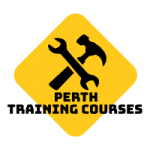In need of confined space training in Perth?
There are many possible circumstances in which an employee may be required to enter a confined space. While working in enclosed areas is sometimes unavoidable, workers in enclosed areas often face significant risks to their health and safety.
Whether working in a tank, tunnel, chimney or similar enclosed area, individuals experience unique occupational risks because these areas are not generally intended for human habitation. Specific hazards within confined spaces include unsafe oxygen levels, engulfment and inhalation of atmospheric contaminants.
That is why it is vital that any person conducting a business or undertaking (PCBU) is required to insure that their employees have adequate supervision, training in confined spaces and access to personal protective equipment (PPE) whenever they are required to enter an enclosed work environment.
The Safe Work Australia Confined Spaces Code of Practice lists “information, instruction and training” as one of the key factors for the protection of occupational health and safety (OHS) standards in confined spaces.
Training must, in particular, cover five key competencies:
What are the hazards within a confined space?
Why is risk control important and how are you going to implement these measures?
What is appropriate for the PPE and how you can fit, use, store and maintain these devices
Understanding and working within the limits of the entry permit
How to respond to an emergency situation
Individuals working in any industry that may require them to enter a confined space as part of their professional undertaking should have access to training in confined spaces.
Due to the diversity of the enclosed spaces in the workplace, many sectors and occupations could be at risk. In particular, the following four industries are most likely to benefit from relevant training and OHS practises.
Agriculture and agriculture
Confined spaces are frequently found in farms and other agricultural workplaces. Common examples of areas where an employee may be required to enter include silos, grain storage, water tanks and manure pits.
Serious OHS risks are present at each of these locations and more, according to Workplace Health and Safety Queensland. The most significant risks to employee well-being include oxygen deficiency, carbon monoxide build-up, airborne organic contaminants, poisoning and suffocation.
Many of the materials, stock and equipment used in or around confined spaces may contribute to these hazards. Grains and other organic matter, for example, can absorb oxygen within silos, leading to difficulty breathing in silos and storage tanks.
Confined space training is an important factor in improving the health and safety of agricultural workers. In addition, all duties performed within the enclosed areas should include the use of protective equipment, atmospheric testing and the use of a stand-by person who can raise an alarm if an emergency has occurred.
Mining:
The mining industry is one of Australia’s largest employers, with some 267,000 people working in mining and related services, according to Mining Australia.
Unfortunately, while employed in this industry, many workers will suffer injury. A few employees will even perish in the course of their professional activities. In fact, a recent report from Mining Australia shows that miners are dying more frequently in Australia than in Iran.
Iran, a country with approximately 5,600 operating mines, reports that one miner dies every 16 days across the country’s resource industry. Comparatively, the 446 mines in Australia have seen 12 workers die so far this year.
With just 180 days to go before a dozen deaths, one mining worker dies every 15 days in Australia.
Of these deaths, a significant number were caused by cave-ins, while one worker succumbed to smoke in a confined space. The frequency of such fatalities could have decreased if risk assessments were carried out by trained individuals and supervised by qualified management personnel.
Freight & Storage
It is vital for employees to understand the risks of transporting and working in close quarters with hazardous materials when working in the freight and storage industry.
Ships’ containers, freight containers and truck tanks are just three examples of the types of confined spaces that may be required to be used in this industry.
In many cases, it is vital that PPE devices, such as atmospheric monitors and breathing apparatus, are made available to employees. In addition to providing workers with such equipment, it is also important to insure that individuals can properly fit, use and maintain such equipment.
Construction work
Whether working in residential construction or civil works, those employed in this sector may be required to enter confined spaces during the undertaking of their duties.
Common confined spaces found in this sector include crawling areas, drainage or sewer pipes and trenches. A variety of OHS risks may be present in these areas, such as unsafe oxygen levels, engulfment and wall collapse or cave-ins.
Minimizing the risk of injury or death within the construction industry is an important objective for all employers, as this sector accounts for approximately 9 per cent of the total Australian workforce and 11 per cent of all workers’ compensation claims, according to Safe Work Australia.
Any PCBU operating within the construction industry must have access to training in confined spaces for all employees who may be required to enter confined spaces. In addition, the same training should also be offered to supervisors or stand-by personnel responsible for those within a confined space.
If you are working in one of these industries, or would like more information on improving OHS performance in any of these sectors, get in touch with AlertForce today to access nationally recognised training in confined spaces!
Previous Post:
What is a Confined Space?

